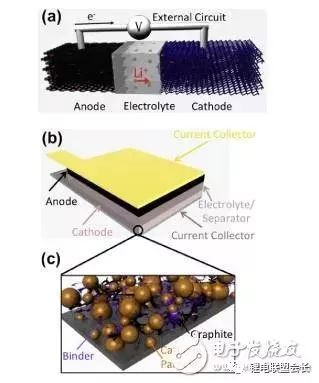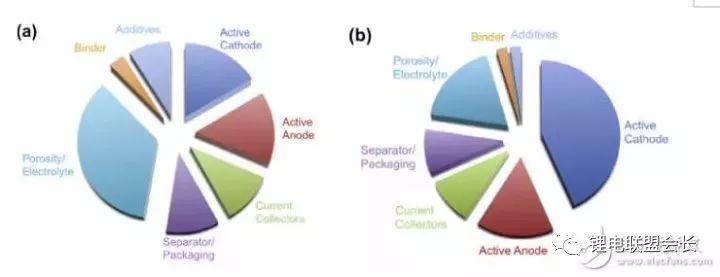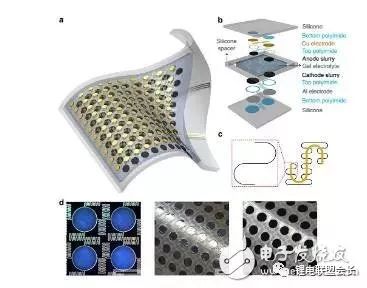Some time ago, foreign media reported that the electric car brand Fisker had applied for a patent for a solid-state lithium battery. This battery boasts a maximum range of 800 kilometers and can be charged in just one minute. The news caused quite a stir, as it seemed to solve two major issues: battery life and fast charging.
FOX TV even invited Fisker for an interview. According to the company, they plan to showcase this technology at CES in January, with mass production expected by 2023. They also mentioned that the cost would be only one-third of current lithium-ion batteries.
Back in mid-2017, Fisker released its next-generation Emotion model, which used a lithium battery with a range of 640 km and could gain 200 km of range in just 9 minutes. Earlier, in 2016, Fisker unveiled the Emotion concept, featuring a stunning design with a butterfly-like door silhouette against a sunset. At the time, it was claimed to use a graphene battery, offering a range of 640 km — making it the first luxury electric vehicle to exceed 480 km on a single charge.
At that time, Tesla’s Model S 100D wasn’t available yet, and even the 90D model only offered around 450 km of range.

â–² Fisker Emotion
So, what exactly is a solid-state battery? What kind of technology does it represent?
In simple terms, a solid-state battery is a type of battery that contains no gas or liquid — all components are in solid form. While most people are familiar with lithium-ion batteries, the term "solid-state lithium-ion battery" is often used to refer to the broader category of all-solid-state batteries (excluding newer technologies like solid-state lithium-sulfur batteries).
This article will focus on the key aspects of all-solid-state lithium-ion batteries, commonly referred to as "solid-state batteries."
Typically, a lithium-ion battery consists of a positive electrode, a negative electrode, a separator, an electrolyte, and a structural casing. The electrolyte allows ions to flow inside the battery, enabling electrical current.
The electrolyte is a core component of lithium-ion batteries and is also one of the most profitable parts of the industry.

Schematic diagram of lithium ion battery
In this setup, Li+ ions move through the electrolyte to complete the circuit.
However, many users have noticed that their lithium batteries may swell over time. In extreme cases, there's even a risk of explosion — such as with some recent incidents involving overheated batteries, which led to serious problems for manufacturers and suppliers.
Additionally, the operating temperature range of current lithium-ion batteries is limited. Performance drops significantly when temperatures exceed 40°C, and safety becomes a concern. That’s why Tesla’s Model S has a strict battery cooling system.
In fact, many of these safety concerns stem from the organic electrolytes used in traditional lithium-ion batteries.
To address these issues and improve energy density, researchers and industries are now developing solid-state batteries. These replace the separator and liquid electrolyte in conventional lithium-ion batteries with a solid electrolyte.
So, what are the advantages of solid-state batteries compared to regular lithium-ion batteries?
First, we need to understand the main factors affecting the safety of standard lithium-ion batteries:
1) Electrode material properties, such as lithium dendrites, which can cause short circuits if they pierce the separator during high-current operation.
2) Organic liquid electrolytes are prone to side reactions, decomposition, gas generation, and combustion at high temperatures.
3) Battery quality varies, especially among smaller manufacturers whose products may not meet safety standards.
4) Poor battery management systems can lead to overcharging or over-discharging, posing a danger.

If solid-state battery technology is adopted, the issues related to points 1 and 2 can be largely resolved. The maximum operating temperature of the battery can increase from 40°C to higher levels, allowing for a wider temperature range and more diverse applications.
Safety is one of the primary drivers behind the development of solid-state batteries. Let’s explore the advantages of solid-state batteries in more detail.
One advantage: compact size
Volumetric energy density is a critical parameter for batteries. In applications such as consumer electronics, smartphones, and electric vehicles, higher volumetric energy density means smaller batteries for the same capacity.
Many electronic devices have limited space, with batteries often occupying nearly a third of the device’s volume and weight. Manufacturers and consumers alike want to increase battery capacity while maintaining a compact form factor.
In traditional lithium-ion batteries, separators and electrolytes account for about 40% of the battery’s volume and 25% of its mass. Replacing them with solid electrolytes (such as organic or inorganic ceramic materials) can reduce the distance between the electrodes and significantly decrease the battery’s thickness, leading to a more compact design.
Moreover, solid-state batteries made via PVD/CVD techniques can be as thin as a few tens of micrometers, enabling the creation of very small power sources suitable for integration into MEMS (Micro-Electro-Mechanical Systems).
Another advantage: flexibility
Solid-state batteries can be further optimized for flexibility, opening up new possibilities for device design. Even brittle ceramic materials become flexible when made thin enough, typically below a millimeter in thickness.
With reduced weight and thickness, solid-state batteries can be bent hundreds or thousands of times without significant performance loss. This makes them ideal for wearable devices and other flexible electronics, where traditional lithium-ion batteries struggle to match.

In addition to flexibility, functionalized solid-state batteries offer even greater potential. They can be made transparent, stretchable (up to 300% elongation), or integrated with photovoltaic devices to create power generation-storage systems. These innovations suggest that solid-state batteries could revolutionize future electronic designs.


Third advantage: enhanced safety
As an energy storage device, no battery is 100% safe. However, real-world safety depends on various factors, including electrode materials, electrolyte properties, and battery management systems.
Currently, the safety of lithium-ion batteries is widely regarded as “not ideal.†Solid-state batteries, on the other hand, offer a more secure alternative.
Fourth advantage: higher energy density
Using solid electrolytes allows for the use of metal lithium as the anode instead of lithium-intercalated graphite, reducing the amount of anode material needed and significantly increasing the overall energy density.
Additionally, many advanced electrode materials that don't work well with traditional electrolytes can function better with solid electrolytes. As a result, solid-state batteries can achieve energy densities of 300–400 Wh/kg in labs, compared to 100–220 Wh/kg for conventional lithium-ion batteries.
From an energy density perspective, solid-state batteries could potentially shift our daily lives from “one day per charge†to “two days per charge.â€
Challenges Ahead
Despite their promise, solid-state batteries still face numerous challenges. For example, the interface impedance caused by point-contact conduction in solid electrolytes needs to be addressed. Also, solid-state batteries are more prone to cracking due to expansion and contraction during charge/discharge cycles.
Cost remains a significant issue. Most solid-state batteries are either too expensive or require complex manufacturing processes, limiting their scalability. Many are currently only suitable for small electronic devices.

Moreover, the technology is still in early stages, with few companies capable of large-scale production. There are still many technical hurdles to overcome before widespread adoption.
Another challenge: fast charging is still not realistic
Currently, solid-state batteries generally have poor rate performance, with high internal resistance and voltage drop at high discharge rates. Expecting them to solve fast-charging issues in the near future is unlikely.
While some solid-state batteries on the market operate at low temperatures, others require specific conditions to function properly.
Large-scale commercialization is still far off
Menaheim Anderman, president of a full battery consulting firm, stated that solid-state batteries for electric vehicles are still in the research phase. He noted that the cost and complexity of materials make it difficult to predict a clear commercialization timeline.
Toyota claims that its solid-state batteries charge twice as fast as lithium-ion batteries, but performance is highly dependent on temperature. Fast charging may only be feasible under slightly warmer conditions.
Many in the industry remain skeptical about Toyota’s plans, believing that mass production of solid-state batteries is still a long way off.
These statements support Elon Musk’s claim that solid-state battery technology is still in the research stage. However, if Toyota successfully develops and applies this technology, it could bring a revolutionary change to the electric vehicle battery industry — much like how the Prius transformed the hybrid market.
Company Strategies in Solid-State Batteries
Several startups and traditional industry leaders have already invested in solid-state battery research.
Leading battery companies like Toyota, Panasonic, Samsung, and Chinese firm CATL are actively exploring solid-state battery R&D.
Among them, Bolloré (France), Sakti3 (USA), and Toyota (Japan) are considered pioneers, each representing different solid electrolyte technologies: polymer, oxide, and sulfide-based systems.
Bolloré uses a polymer electrolyte, while Samsung focuses on sulfide electrolytes. James Dyson acquired Sakti3 in 2015 and later announced a $1.4 billion investment in a battery factory. Bosch acquired Seeo in 2015 and partnered with Japanese companies to develop solid-state anode lithium-ion batteries.
In 2016, Guo Yongsheng of CATL introduced the company’s progress in solid-state lithium-metal batteries at the GNEV7 conference, stating that solid-state battery development was still in its early stages.
Overall, solid-state batteries are a key direction for future battery development. While there is still a long way to go in terms of electrolyte conductivity, battery rate, production efficiency, and cost control, the potential for transformation in the electric vehicle industry remains significant.
xiaomi redmi glass,xiaomi glass,redmi glass,glass xiaomi,gorilla glass redmi
Dongguan Jili Electronic Technology Co., Ltd. , https://www.jlglassoca.com